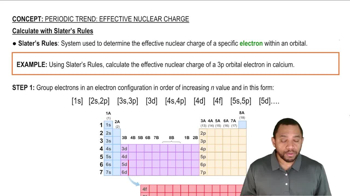Textbook Question
Answer the following questions. (d) A particular sample of crude oil has a density of 0.85 g/mL. What is the mass of 1.00 barrel of this crude oil in kg, where a barrel of oil is exactly 42 gallons?
 Verified step by step guidance
Verified step by step guidance



Answer the following questions. (d) A particular sample of crude oil has a density of 0.85 g/mL. What is the mass of 1.00 barrel of this crude oil in kg, where a barrel of oil is exactly 42 gallons?
A bag of Hershey's Kisses contains the following information:
Serving size: 9 pieces = 41 g
Calories per serving: 230
Total fat per serving: 13 g
(a) The bag contains 2.0 lbs of Hershey's Kisses. How many Kisses are in the bag?
A bag of Hershey's Kisses contains the following information:
Serving size: 9 pieces = 41 g
Calories per serving: 230
Total fat per serving: 13 g
(b) The density of a Hershey's Kiss is 1.4 g/mL. What is the volume of a single Hershey's Kiss?